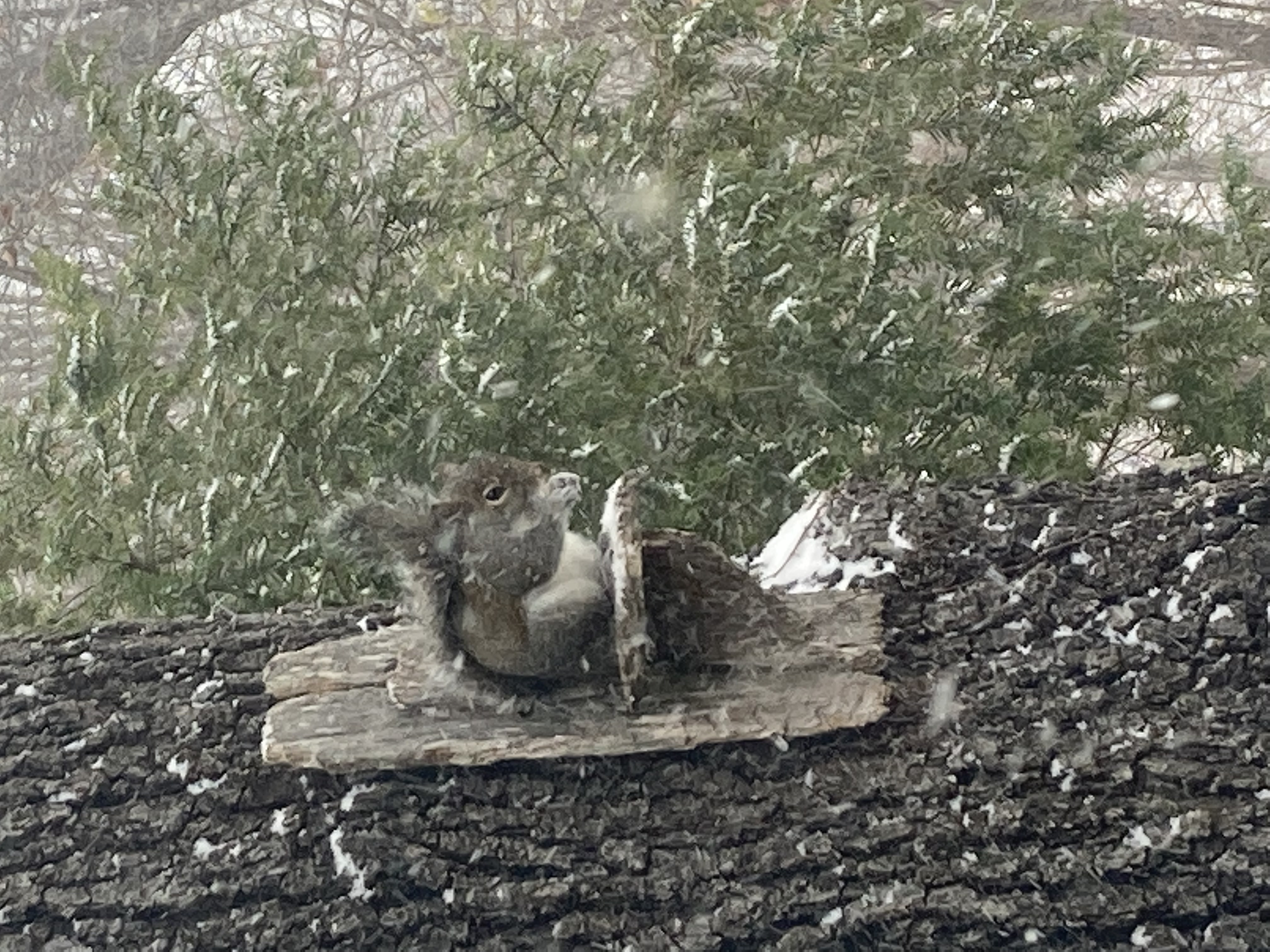Squirrels
Contact
University of Arkansas System Division of Agriculture
Cooperative Extension Service
2301 S. University Ave.
Little Rock, AR 72204

Squirrels
You may have missed it, but January 21 was National Squirrel Appreciation Day. Personally, I find squirrels hard to appreciate, but it’s understandable that some people might find rodents that climb around in trees with insatiable appetites interesting. Let us consider these acrobatic tree climbers more closely. Perhaps it will help me overcome my bias against these silvan rodents.
Two hundred species of squirrels have been described in the world, with three native to Arkansas. The Eastern Gray Squirrel is the most common, the Fox (Red) Squirrel is the largest and the Southern Flying Squirrel is the smallest and least likely to have been seen.
The Eastern Gray Squirrel has a gray coat, usually measures 16 to 20 inches in length and weighs just over a pound. They range throughout the eastern woodlands of the U.S. and Canada and have invaded parts of Europe where they are considered an invasive species. This is the species most people do battle with while feeding birds— they not only have an insatiable appetite, they also have lots of friends and family. Feeding both the birds and squirrels can become expensive.
Gray squirrels — especially in the northern parts of their native range — may have black coats. Though I’ve never seen one, they are said to be around. Acorns, hickory nuts and walnuts are favorite wild food for these squirrels. In the fall they gather these seeds and stash them individually in shallow holes they dig throughout the area. Because they bury more seeds than they can apparently remember, they are responsible for a lot of natural forest reseeding. But, as anyone who has ever fed birds knows, they also have a real affinity for sunflower seeds and peanuts.
Gray squirrels typically live five or six years in the wild. They have two litters per year (in the spring and again in midsummer) with an average of two to six kits per birthing.
Fox squirrels, so called because their coat is the same color as the red fox, have a similar range as the gray squirrel but they range further west into the central Great Plains. While both species are at home in suburbia, the fox squirrel seems to favor more open locations where the trees are more widely spaced. They are often seen in city parks.
These larger squirrels weigh a pound and a half up to two pounds and are 18 to 28 inches long. They feed on the same acorns and nuts as the gray squirrel, but in the fall they cache the seeds in middens instead of stashing them individually.
Fox squirrels can live 10 to 12 years in the wild. They have two to three kits per litter. Yearling fox squirrels produce only one brood a year while older animals have two per season. Because of the larger litter size, gray squirrels are usually seen in larger numbers than fox squirrels.
The Southern Flying Squirrel is one I’ve never seen. Unlike the other two species, this tiny squirrel is nocturnal and shy. It is not common in urban environments but will swoop in to visit bird feeders at night in yards adjacent to wooded areas. It doesn’t fly in the traditional sense, but instead glides from on high by extending its legs that are connected by a loose fold of skin that provides a convenient sail.
Our native flying squirrel is only 8 to 10 inches long and weighs in at two to three ounces. It is mousy gray in color with especially large black eyes. Being small and nocturnal, owls are a principle threat and individuals seldom live more than a few years of age. They are very social and in the winter nests of up to 20 animals are not uncommon.
Southern flying squirrels are omnivores and often eat mushrooms, lichens and protein rich foods such as insects, bird eggs and baby birds. This species typically breeds twice per year and has three to four kits per brood.
Starting in 2011, Bentonville, Arkansas had been the home of the International Squirrel Cook Off. While my personal recollection of squirrel meat - stringy, tough and small — might reflect the culinary skills of my mother, it seems festival organizers recognized an opportunity and pounced on it. But alas, as with so many other things, COVID concerns seem to have put this fine festival out to pasture.
I’m not sure if squirrels feel the love on National Squirrel Appreciation Day, but knowing a bit more about them makes me just a bit less biased against them on their special day.
